 Air Symbol Air Symbol
Air is one of the five elements that appear in most Wiccan and Pagan traditions. Air is one of the four classical elements often invoked in Wiccan rituals. Air is the element of the East, connected to the soul and the breath of life. Air is associated with the colours yellow and white. In pagan and Wicca symbolism, the other elements, fire, earth, and water, are also used. |
 Seax Wicca Seax Wicca
Seax-Wicca is a tradition, or denomination, of the neopagan religion of Wicca, which is mostly inspired by the iconography of the historical Anglo-Saxon paganism, though, unlike Theodism, it is not a reconstruction of the early medieval religion itself Seax Wicca is a tradition founded in the 1970s by author Raymond Buckland. It is inspired by the Saxon religion of old but is specifically not a reconstructionist tradition. The symbol of the tradition represents the moon, the sun, and the eight Wiccan Sabbats. |
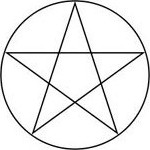 Pentacle Pentacle
The pentacle is a five-pointed star, or pentagram, contained within a circle. The five points of the star represent the four classical elements, along with a fifth element, which is typically either Spirit or Self, depending on your tradition. The pentacle is probably the best-known symbol of Wicca today and is often used in jewelry and other designs. Typically, a pentacle is traced in the air during Wiccan rituals, and in some traditions, it is used as a designation of degree. It is also considered a symbol of protection and is used in warding in some Pagan rituals. It is a standard symbol for witches, freemasons, and many other pagan or occult groups. |
 Horned God Symbol Horned God Symbol
The Horned God is one of the two primary deities found in the pagan religion of Wicca. He is often given various names and epithets and represents the male part of the religion’s duotheistic theological system, the other part being the female Triple Goddess. In common Wiccan belief, he is associated with nature, wilderness, sexuality, hunting, and the life cycle. |
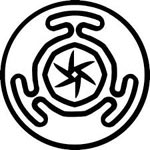 Hecate`s Wheel Hecate`s Wheel
This labyrinth-like symbol originates from Greek legend, where Hecate was known as a guardian of the crossroads before she evolved into a goddess of magic and sorcery. Hecate’s Wheel is a symbol used by some Wicca traditions. It seems to be most popular among feminist traditions and represents the three aspects of the Goddess Maiden: Mother, Mother, and Crone. |
 Elven Star Elven Star
The Elven Star, or seven-pointed star, is found in some branches of the Faerie tradition of Wicca. However, it has different names and can be associated with many other magical traditions. It is also a reminder that seven is a sacred number in many magical traditions, it is connected with the seven days of the week, the seven pillars of wisdom, and many other magical theories. In Kabbalah, seven is connected to the sphere of victory. |
|
Although sometimes called a Sun Wheel, this symbol represents the Wheel of the Year and the eight Wiccan Sabbats. The term -sun wheel- comes from the solar cross, which was a calendar used to mark the solstices and equinoxes in some pre-Christian European cultures. |
Besom
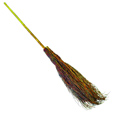 The besom has an important symbolic role to play in the Wiccan rituals and practices. It is a rounded broom made of a large pole with twigs or straw tied at one end. It symbolizes purification and cleansing, as its ritualistic use was for cleaning sacred places and sweeping out negative energies. The traditional besom was made of a shaft made of Ash, bristles made of Birch twigs, and a binding cord made from Willow strands. Ash represents masculinity, amorous love, and protection, while Birch symbolizes femininity and purification. Thus, the besom signifies their union. It forms a part of a Wiccan marriage ceremony in which the newlyweds jump over it to strengthen their vows. The besom has an important symbolic role to play in the Wiccan rituals and practices. It is a rounded broom made of a large pole with twigs or straw tied at one end. It symbolizes purification and cleansing, as its ritualistic use was for cleaning sacred places and sweeping out negative energies. The traditional besom was made of a shaft made of Ash, bristles made of Birch twigs, and a binding cord made from Willow strands. Ash represents masculinity, amorous love, and protection, while Birch symbolizes femininity and purification. Thus, the besom signifies their union. It forms a part of a Wiccan marriage ceremony in which the newlyweds jump over it to strengthen their vows.
|
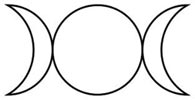 Triple Moon Symbol Triple Moon Symbol
This symbol is found in many NeoPagan and Wiccan traditions as a symbol of the Goddess. The first crescent represents the waxing phase of the moon, meaning new beginnings, new life, and rejuvenation. The center circle symbolizes the full moon, the time when magic is at its most potent and powerful. Finally, the last crescent represents the waning moon, meaning a time to do banishing magic and send things away. |
|
In the Celtic world, the triskele is found carved in Neolithic stones all over Ireland and Western Europe. For modern Pagans and Wiccans, it is sometimes adopted to represent the three Celtic realms of earth, sea, and sky. |
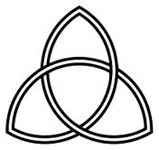 Triquetra Triquetra
In some modern traditions, it represents the connection of mind, body, and soul, and in Celtic-based Pagan groups, it is symbolic of the three realms of earth, sea, and sky. |
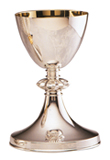 Chalice or Cup Chalice or Cup
The Chalice or Cup is a pagan ritual tool. It represents water, which is considered a feminine element, symbolizing subconscious, psychic ability, intuition, emotions, and gestation. It is also associated with fertility and is representative of the Goddess’ womb or the feminine generative organs. As a symbol of the female energy in the universe, the Chalice is the opposite of Athame, which symbolizes the male energy.
The Chalice has been adopted as a ritual tool in Christianity too, but here, it symbolizes the cup used by Jesus Christ at the last supper and the libation it holds represents the blood of Jesus. |

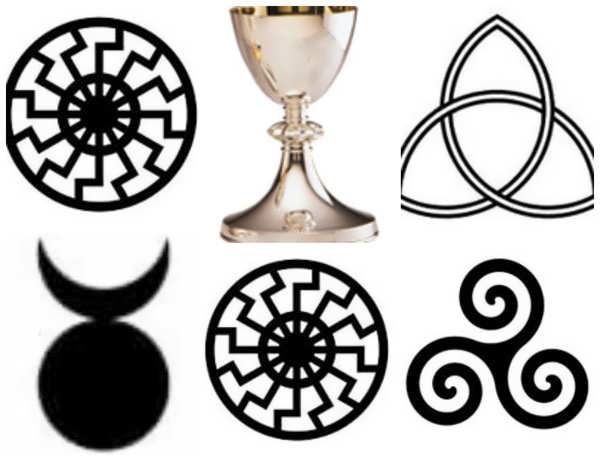
 Air Symbol
Air Symbol Seax Wicca
Seax Wicca Pentacle
Pentacle Horned God Symbol
Horned God Symbol Hecate`s Wheel
Hecate`s Wheel Elven Star
Elven Star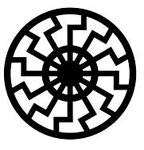

 Triple Moon Symbol
Triple Moon Symbol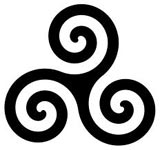
 Triquetra
Triquetra Chalice or Cup
Chalice or Cup
































